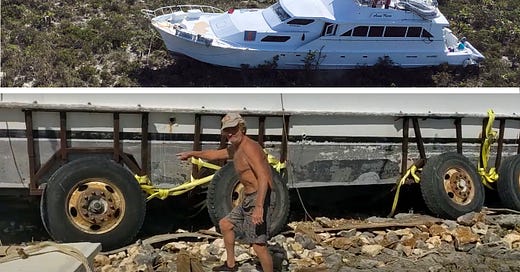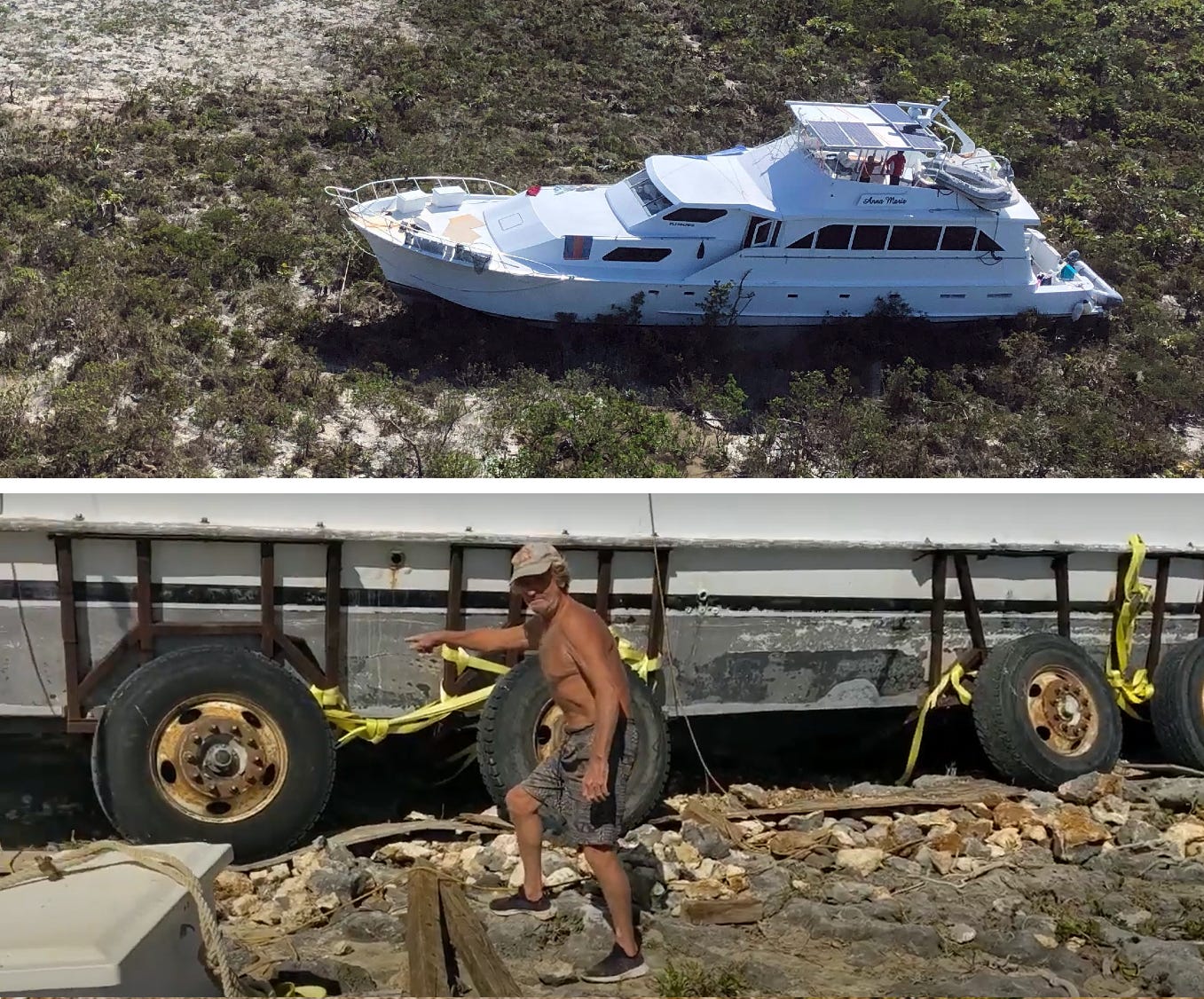29 Months After Hurricane, Grounded Yacht Inches Seaward (Video)
With 12 Wheels and a Winch, Stubborn Aussies Coax 89-Footer to Water
Stubborn is the word for Geoff Bradley and Jenny Kelly.
As Hurricane Dorian bore down on the Bahamas in August 2019, the Australian couple had planned to flee southward out of Dorian’s path, but, hit by a variety of mechanical problems, they instead anchored t…
Keep reading with a 7-day free trial
Subscribe to LOOSE CANNON to keep reading this post and get 7 days of free access to the full post archives.



